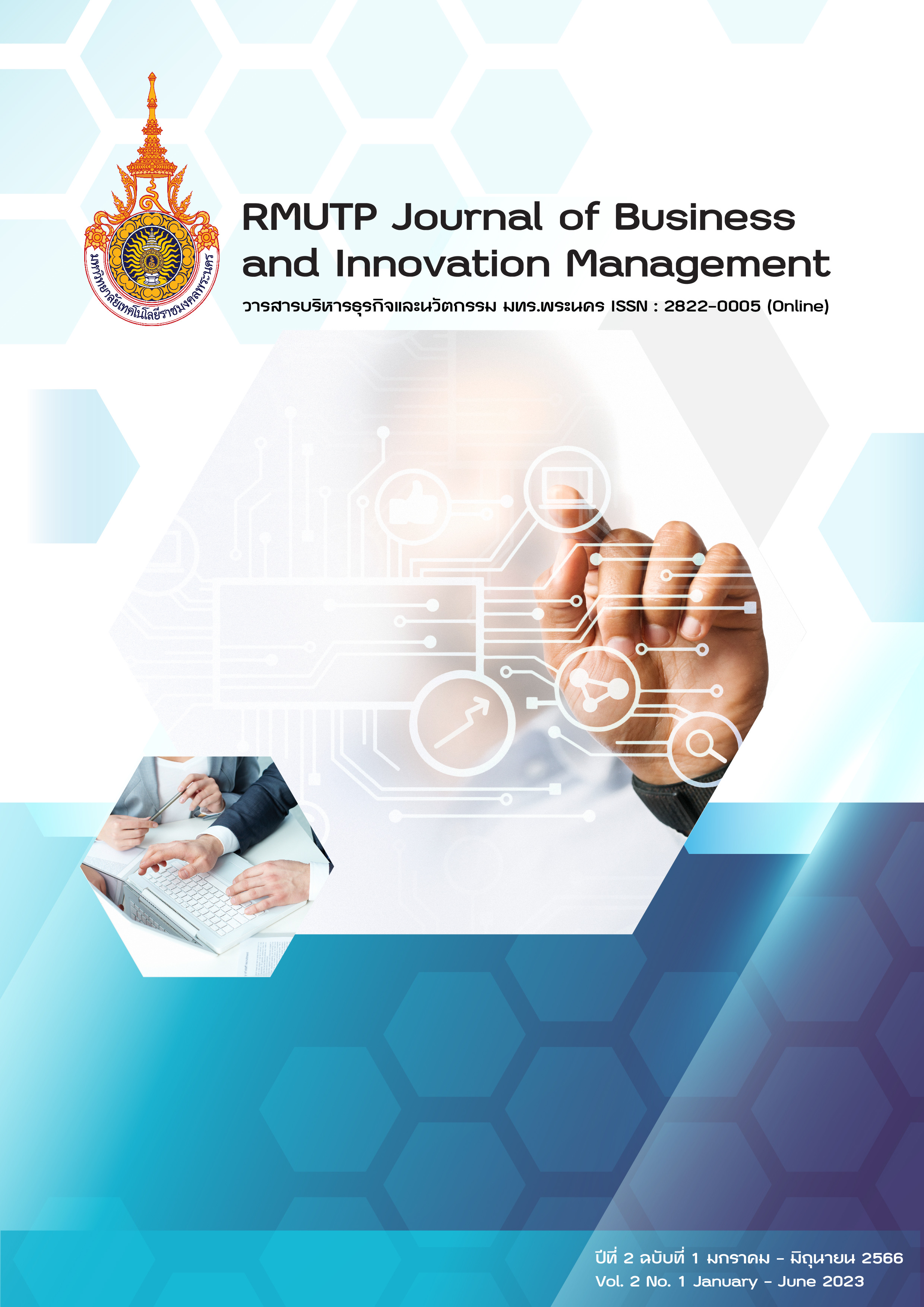THE STUDY OF GUIDELINES AND FACTORS AFFECTING THE SUCCESS IN S-CURVE INDUSTRY: A CASE STUDY OF A CEMENT COMPANY
Main Article Content
Abstract
During this economic crisis, the government has taken the opportunity to deploy policies to drive investment in targeted industries. S-Curve industry is an industry that needs to be reinvented through improvements and adoption of technology and creativity so that the industry can continue to grow in the future. It is to increase competitiveness and create growth for the Thai economy in the long run. The main goal is the technology development in order to produce cutting-edge innovations. The cement industry is one of the businesses that can help develop the country's industrial sector to be modern and globally competitive. Therefore, businesses that have complete supporting factors will be ready to transform the organization into the S-curve industry in order to create more stability for the company. This academic article aims to study factors of entrepreneurial abilities and marketing mix factors affecting business transformation into S-Curve industry. Plus, the research summarizes the guidelines for the development of the organization to the S-Curve industry for companies in the cement industry. The result of the study shows that the cement company should accept more product lines to the process and should adapt to the unexpected current situation quickly.
Article Details

This work is licensed under a Creative Commons Attribution-NonCommercial-NoDerivatives 4.0 International License.
Articles published in the Journal of Business Administration and Innovation Rajamangala University of Technology Phra Nakhon contains information and content. The article's single author is accountable for it. In all instances, the journal's editors are not accountable for any losses incurred.
References
ชัยเสฏฐ์ พรหมศรี. (ม.ป.ป.). แนวคิดการเปลี่ยนแปลงองค์การสำหรับผู้บริหาร (Organizational Change for Executives). Executive Journal, 41-48.
ธนา สวัสดี. (2562). ส่วนประสมทางการตลาดกับการตัดสินใจซื้อรถยนต์มือสองของประชาชนในจังหวัดสมุทรปราการ. (วิทยานิพนธ์ศิลปศาสตร์มหาบัณฑิต) มหาวิทยาลัยเกริก.
ประเวศน์ มหารัตน์สกุล. (2560). กลยุทธ์การวางแผนและการจัดการ. กรุงเทพ: สำนักพิมพ์ปัญญาชน
พุทธชาด ลุนคำ. (2564). แนวโน้มธุรกิจ/อุตสาหกรรม ปี 2564-2566: ธุรกิจวัสดุก่อสร้าง. เข้าถึงได้จาก https://www.krungsri.com/th/research/industry/industry-outlook/Construction-Construction-Materials/Construction-Materials/IO/io-construction-materials-21
รุ่งโรจน์ สงสระบุญ. (2559). S-curve อุตสาหกรรมอนาคตพลวัต. เข้าถึงได้จาก https://ba.siam.edu/wp-content/uploads/2017/05/S-curve.pdf
สุธี ขวัญเงิน. (2559). หลักการจัดการ (Principles of Management). กรุงเทพฯ: ซีเอ็ดยูเคชั่น
อภิชัย ศรีเมือง. (2556). KPI เพื่อประเมินความสำเร็จของหัวหน้างานสำหรับผู้บริหาร. นนทบุรี: ธิงค์ บียอนด์
Gardner, D. G., & Pierce, J. L. (2001). Organization-based self-esteem, generalized self-efficacy, and affective reactions to the workplace: An empirical re-examination. Journal of Management Systems, 13(4), 31-48.


